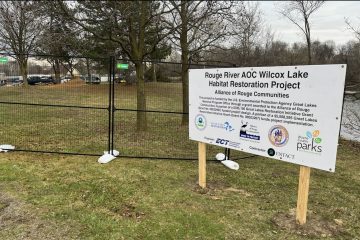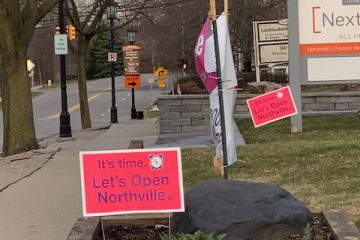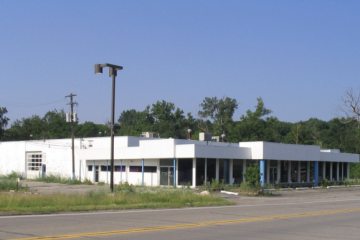City adopts new rules for “bigfoot” homes
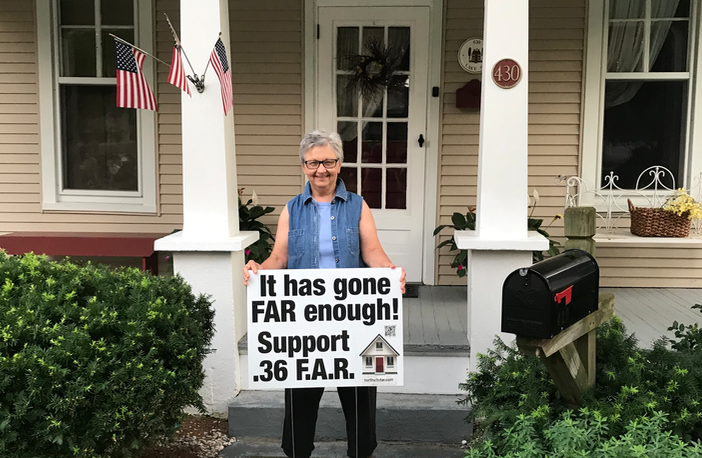
Aug. 6, 2020 PLYMOUTH VOICE.
Plymouth Michigan News
UPDATED
Don Howard
Staff Writer
After years of complaints and protests about the invasion of monstrous new houses and radical remodeling, a zoning ordinance amendment to limit the size of homes by a ratio of square footage to lot sizes has been approved by members of the Northville City Council.
The construction of giant-sized homes on small lots has become all too familiar in Northville and Plymouth in recent years, along with accusations that builders are over-building and over-selling to boost revenue, while Realtors cash-in on high-priced luxury homes on small, neighborhood lots.
Northville residents have complained to officials that the so-called big-foot homes are changing the complexion of the community, ruining the quaint tree-lined streets with well-manicured lawns that have made the city a serene picturesque community for more than a century.
Throughout the city, signs reading “It has gone FAR enough,” pepper lawns in Northville. An organization of neighbors has set up a website for support: Northvillefar.com
Homeowners are continuing to voice their frustration and city officials apparently listened.
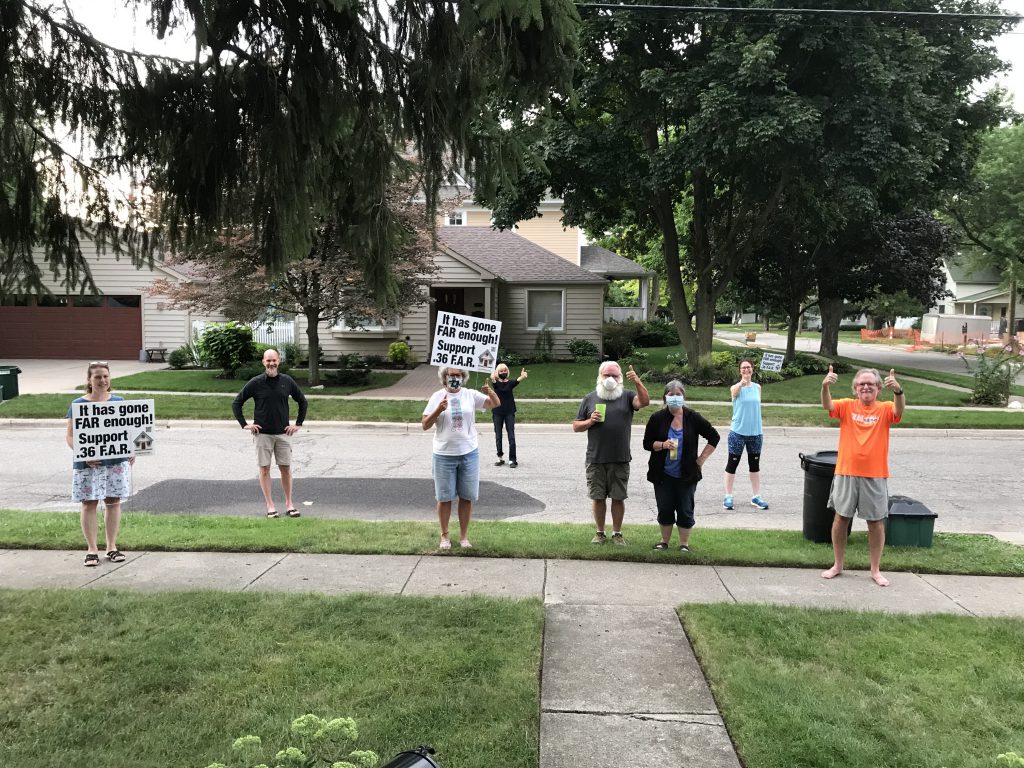
Similar to the rampant growth in recent years that permeated neighboring Plymouth, Northville homeowners are now complaining as builders continue to cram houses of monstrous proportions on small lots.
In 2017, at a time when 20 homes were under construction in the City of Plymouth, the city commissioners, under pressure, ushered in new restrictions to restrict over-building and rampant reconstruction. The average Plymouth lot size is 7,200 square feet. The city adopted a .40 floor area ratio ordinance, the lowest considered by members of the commission, although some residents sought to make it even more restrictive.
Often blocks of uniform houses are broken with standout structures that are two to three times larger and often much more contemporary in design. Trees, grass and landscaping are stripped from the lots, which in Northville average close to 11,000 square feet. Dirt is often mounded in the center to create more lot height and towering structures with high rooflines consume the properties.
Some call the over-built homes McMansions.
The revised ordinance, FAR .36 or Floor Area Ratio, refers to the size of the building compared to the size of the lot. The first reading of the new ordinance took place last month at he regular Northville City Council meeting.
The ordinance amendment calculation takes the square footage of the house, excluding the basement, divided by the square footage of the lot and the result cannot exceed .36. A porch or detached garage is excluded from the calculation.
F.A.R, sometimes called floor space ration (FSR) or floor space index (FSI) is nothing new, commonly used in zoning to limit urban density and is sometimes manipulated with existing ordinances to take advantage of building codes, officials said.
Northville Mayor Brian Turnbull said he’s received 327 letters from concerned residents, both pro and con to F.A.R. amendment, adding that the planning commission has taken two years to study the problem.
In 2018, the Northville Planning Commission members authorized a study of new home trends and the impact on Northville, soliciting resident opinions through a questionnaire. The city received 341 responses to the questionnaire.
Mike McClish, a Northville resident since 1986, said in a letter to the commission that his Orchard Heights neighborhood is “afflicted by overbuilding,” where current ordinance allow homes to be built too close the property lines, having inadequate green space.
“The character of my neighborhood is rapidly changing from moderate-sized homes on a lot with reasonable green space and reasonable setbacks from neighboring homes to so-called McMansions, which essentially jam a massive home onto a too-small lot.”
Cabbage Town, an old Northville neighborhood platted in the 1880s, is not in the city historic district.
Lucy Klinkhammer, a retired educator, has lived in Cabbage Town for 39 years in a renovated house she says was built sometime in the 1900s, “and directly next door to a “bigfoot.” Klinkhammer supports the F.A.R.
She said builders and local Realtors, who she hesitates to name, have pushed back and sent out more than 1,000 mailings to residents in opposition, as “the new ordinance will hurt their bottom line.”
“These are established neighborhoods – we don’t want builders doing whatever they want-we’re losing all our houses. This is nuts,” she said.
“We’re hopeful we’re at the end of the road now, after three public hearings.”
Jon Forslund also supports F.A.R.

Forslund, who has lived in Cabbage Town for 29 years, said the new oversized homes are changing the character of the community and the drastically reduced green-space brings other problems, like flooding of streets and ponding of water after a hard rainfall.
“Aside from arguments surrounding the aesthetics of the changing character of our town, there are some very practical issues we’re facing with the increasing size of structures…
“The infrastructure of Cabbage Town was built for fewer, smaller houses,” he said
The second reading of the F.A.R. ordinance was waived and two F.A.R. ordinances for single-family dwellings were adopted by a unanimous vote during the Aug. 3 meeting of the members of the city council.
READ MORE
Plymouth Commission limits size of new homes
Plymouth Voice.

